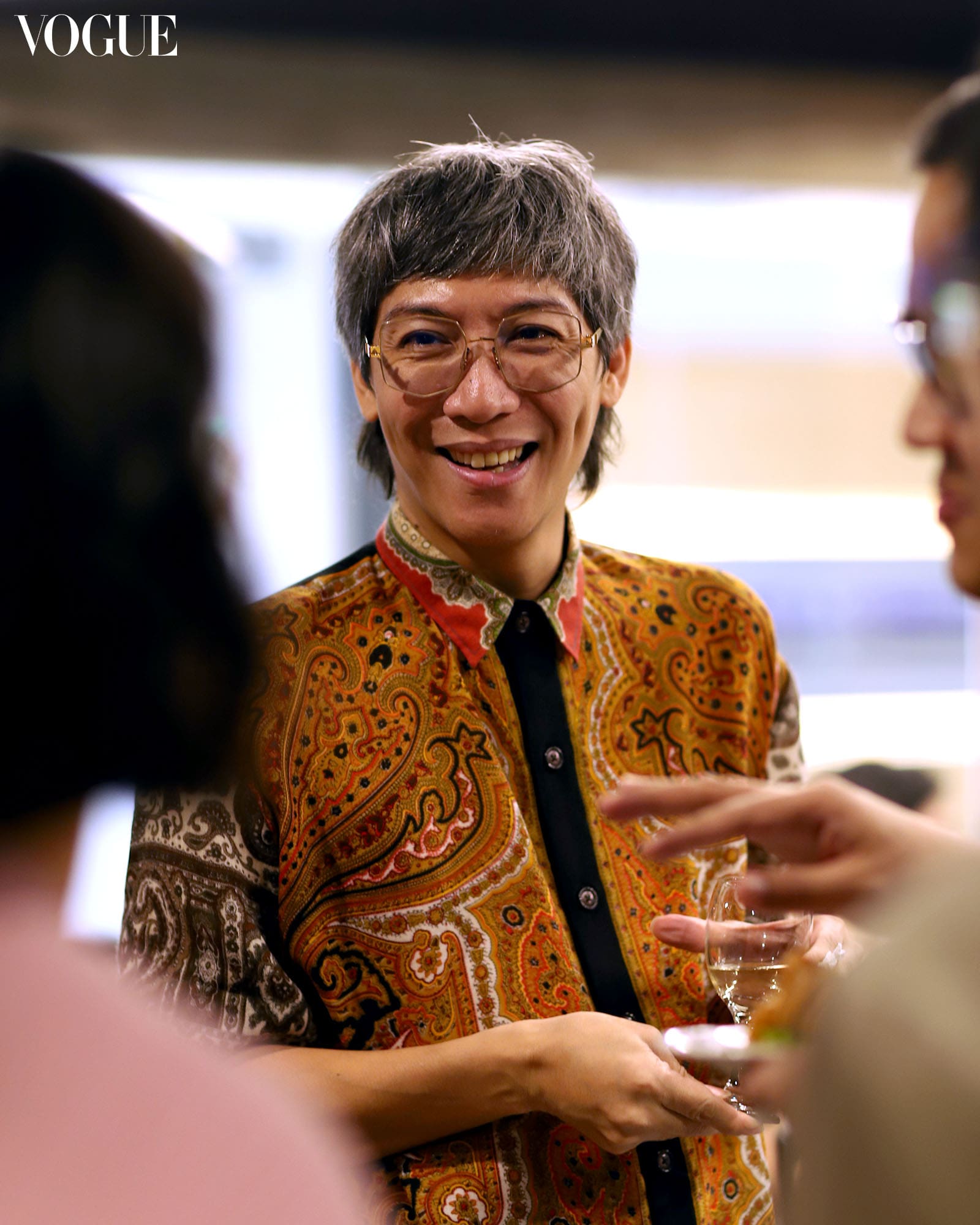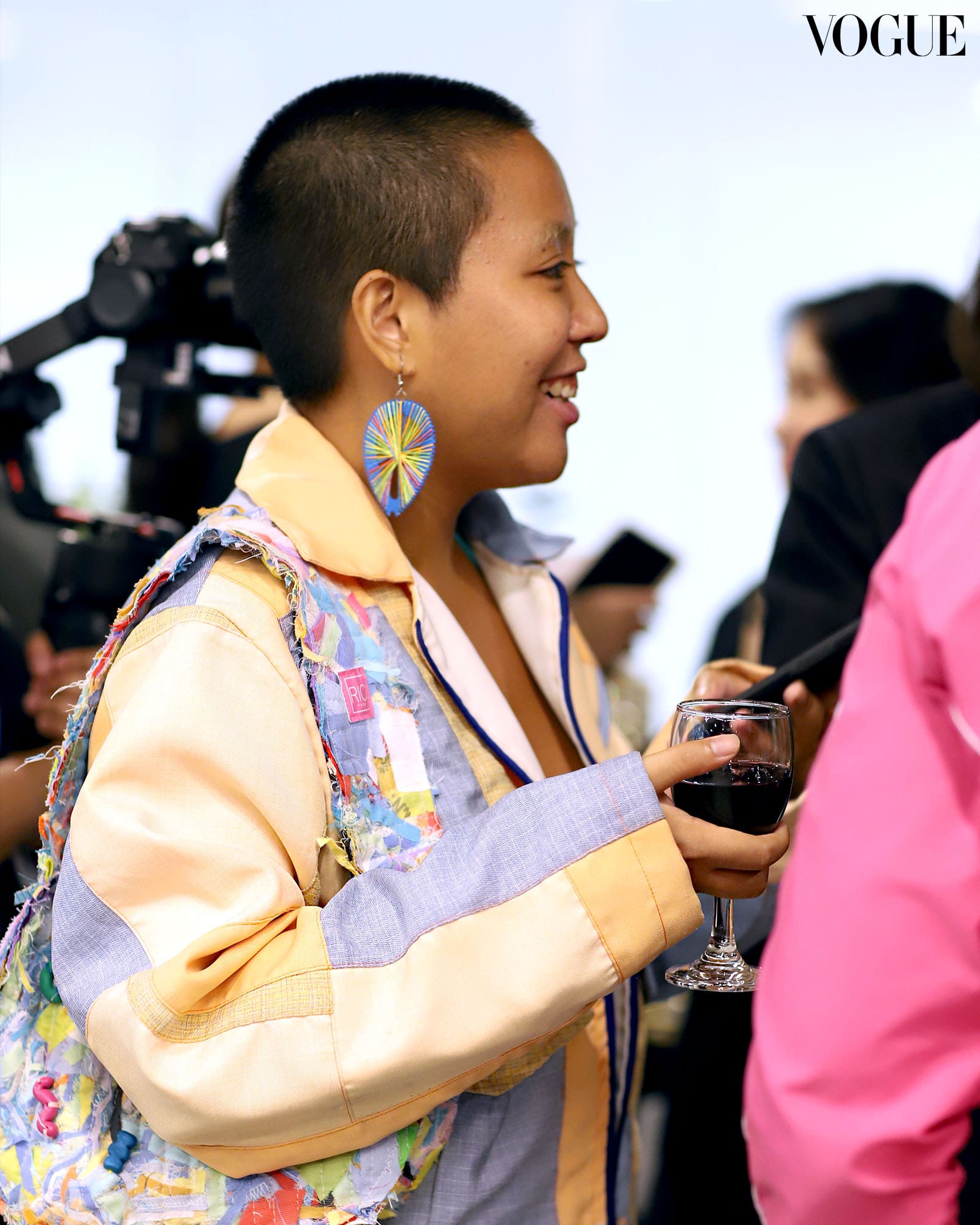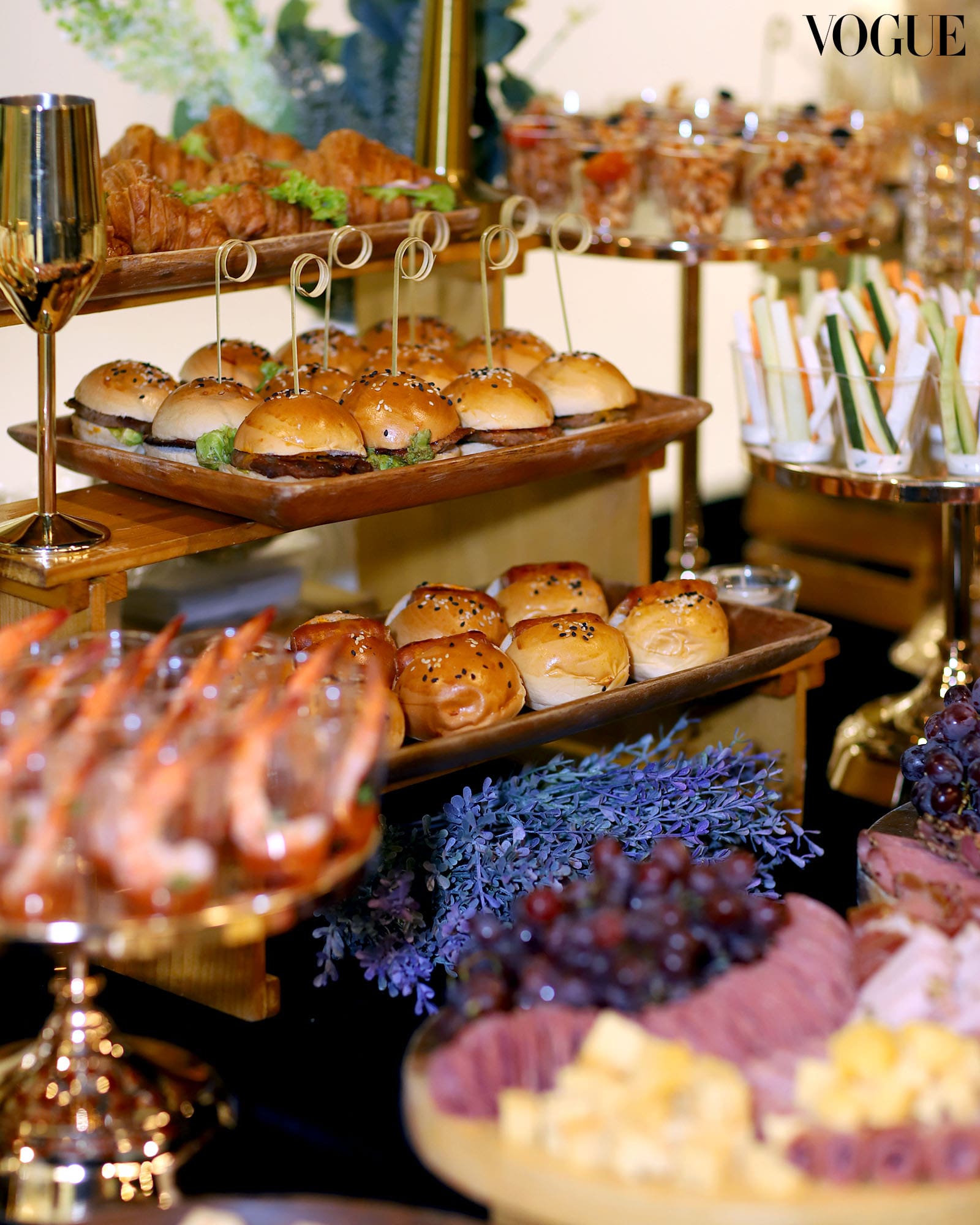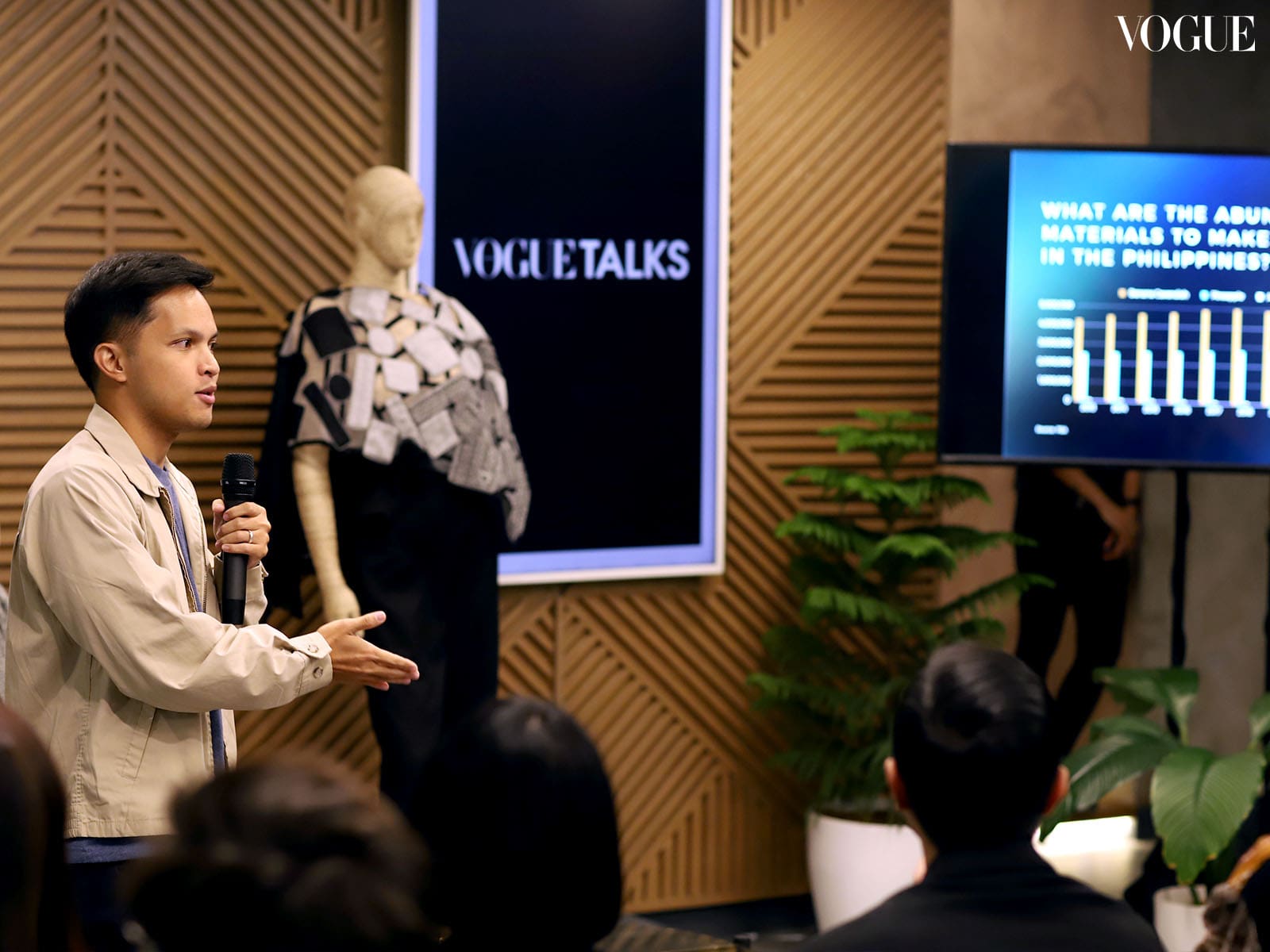Vogue Talks speakers Anna Lagon and Carlo Chen-Delantar hosted a discussion on circular design. Photo by Excel Panlaque
Vogue Talks speakers Anna Lagon and Carlo Chen-Delantar hosted a discussion on circular design. Photo by Excel Panlaque
At the fourth iteration of Vogue Talks, Anna Lagon and Carlo Chen-Delantar led insightful presentations on the state of local fashion and circular design.
“Creativity has the power to change lives.” For Bayo Group co-CEO and chief creative officer Anna Lagon, this is the bottom line for fashion. In the Philippines, the climate crisis is a waking reality as worsening extreme weather events threaten substantial economic and human costs. For the local fashion industry, “sustainable” is less of a trending buzzword and more of a lifeline. But it seems the future isn’t entirely bleak: “Circularity is here,” Head of ESG and Circular Economy at Gobi Partners Carlo Chen-Delantar said. “We just need to see it at scale.”
Last afternoon, Vogue Philippines hosted another one of its Vogue Talks, a seasonal, educational primer on the art and business of fashion. The audience comprised a bright mix of students, creatives, and designers, including Neric Beltran, Rio Estuar, and Xylk Lorena, all gathered to hear Lagon and Chen-Delantar speak on the state of local fashion and how it might continue to move toward circular practices.


Circularity is here
After guests mingled over Pocofino coffee and hors d’oeuvres from AP Grazing Table, Chen-Delantar kicked off the session. His presentation offered a comprehensive overview of the country’s textile-garment industry. When it once held promise in the 70s and 80s, it has grown stagnant due to factors such as “fast fashion proliferation” and a “decline in cotton farms and production.” The Covid-19 pandemic only contributed to this, causing even more business shutters.
But out of these losses arises a glimmer of opportunity. According to Chen-Delantar’s research, the Philippines saw growth in the value added by textile manufacturing, approximating 44.6 billion Philippine pesos. Still, he emphasizes that textile is a largely untapped market, noting the potential of local fibers such as banana cavendish, Piña (pineapple fibers), abaca (Manila hemp), and cotton. If one thing is clear, it’s that the country can grow from here. He motions to the crowd of fashion students and creatives, “So, how do we move forward with fashion in the Philippines? I think this is fairly straightforward. We need to motivate a lot of you to start early with less risk.”
From Chen-Delantar’s work in circular design, all paths lead to businesses that champion garments that can be used more (or are durable and can withstand repair), are made to be made again (or can be recycled and remade), and are made from renewable and recycled materials. These avenues are already happening in the Philippines, he said. They just need to be expanded upon. “I’m very happy to be here because when we started talking about this a long ago, the first [reaction] we got was, ‘Aren’t you crazy for doing this?’ We didn’t have too many allies,” he recounts. “But I’m counting on everyone here as an ally.”


Lagon was next to present. Whereas Chen-Delantar’s talk gave local designers avenues to start, she offered a blueprint. Bayo Group includes brands BAYO, Viseversa, and Tela, and they have complete control of their packaging and retail materials—down to reusing discarded mannequins and hangers made from cornstarch.
Over the past few years, Bayo Group has been a pioneer in the local, sustainable fashion space, which they credit to their framework “Journey to Zero.” She explains, “It aims to achieve ‘zero waste,’ which was the very beginning, and then eventually we added ‘zero carbon emissions’ and [lastly,] ‘through a circular economy.’” From here, the company has continued to advocate for these practices, such as being more transparent with their processes and materials for their customers.
More importantly, they have prioritized the hands that make, giving back through projects like Ambension x Bayo Foundation, HARVEST Creative CommUNITY Hub, and Weaving in the City. “In essence, sustainability really pushes you to do good and do better. It’s something that would inspire a culture that is kinder—not just for the planet, [but] most importantly [for the] relationships that you nurture along the efforts that you [make].”

The future lies in textiles
The stigma that these fabrics can only amount to one look or reflect a specific aesthetic sensibility is more of a matter of creativity in design, both of them say.
“Everything is cyclical,” Chen-Delantar told Vogue Philippines, noting that moving towards more sustainable materials doesn’t hinder design. “I fully believe, long term, that if we innovate for the right types of fabric, we don’t have to rely on the synthetic stuff.” Designers and entrepreneurs alike have grown reliant on synthetic fibers because it’s so cheap to the point where they are motivated to create more, and, for consumers, to buy more. “It becomes a vicious cycle where you get used to it, and you forget to think about the other things.”
Lagon imparts, “Sustainability lives within the creative space. There’s innovation. There are a lot of opportunities for the designer to still reflect their aesthetics [using sustainable fibers]. The only difference is they have to think of better materials that would not negatively impact the environment.” She akins the idea with a personal experience of working with local weavers and ushering them to move away from synthetic fibers, saying it has led to epiphanies within their community—it feels better on the skin, and they get fewer allergies from the clothing they make and wear. “They realize the difference.”


Connecting the dots
As the fashion industry continues on its devastating growth trajectory, there is a growing anxiety among designers and entrepreneurs: would it be better to stop creating altogether? Lagon told Vogue Philippines that her eldest son asked her the same question. “It’s out in the open, right? How fashion has been badly damaging the planet? But then he was quick also to say, ‘If we stop, someone else would just take our place.’ So we might as well change the narrative—be part of the solution,” she said. “We always say, ‘Climate change has challenged us to design better.’ And that designing better is doing better for everyone.”
Both she and Chen-Delantar acknowledge the innate power of purpose, of intention. While it’s often hard to see into effect, we’re at a point where the industry can see these concepts translate in the real world. “Intention is a process. Even if your goal is to commit to it, commitment comes with preparation, commitment comes with infrastructure, time, money,” Chen-Delantar said. “What I’m excited about is the past two years, the majority of investments in this space are going to climate. So what that means is it’s a long time coming. It’s the best time now to innovate.”
When circularity once seemed abstract, people are starting to connect the dots. Chen-Delantar continued: “It’s already happening. We’re talking about it. Publications are talking about it. There was a cover story about it. There are expos, even trade shows or fairs have sustainability. It usually starts as a very small thing, right? And then it starts mushrooming and affecting everything else. Sustainability and circularity should be just the way of life. It should just be embedded. My job is done when I don’t have to talk about circularity.”
